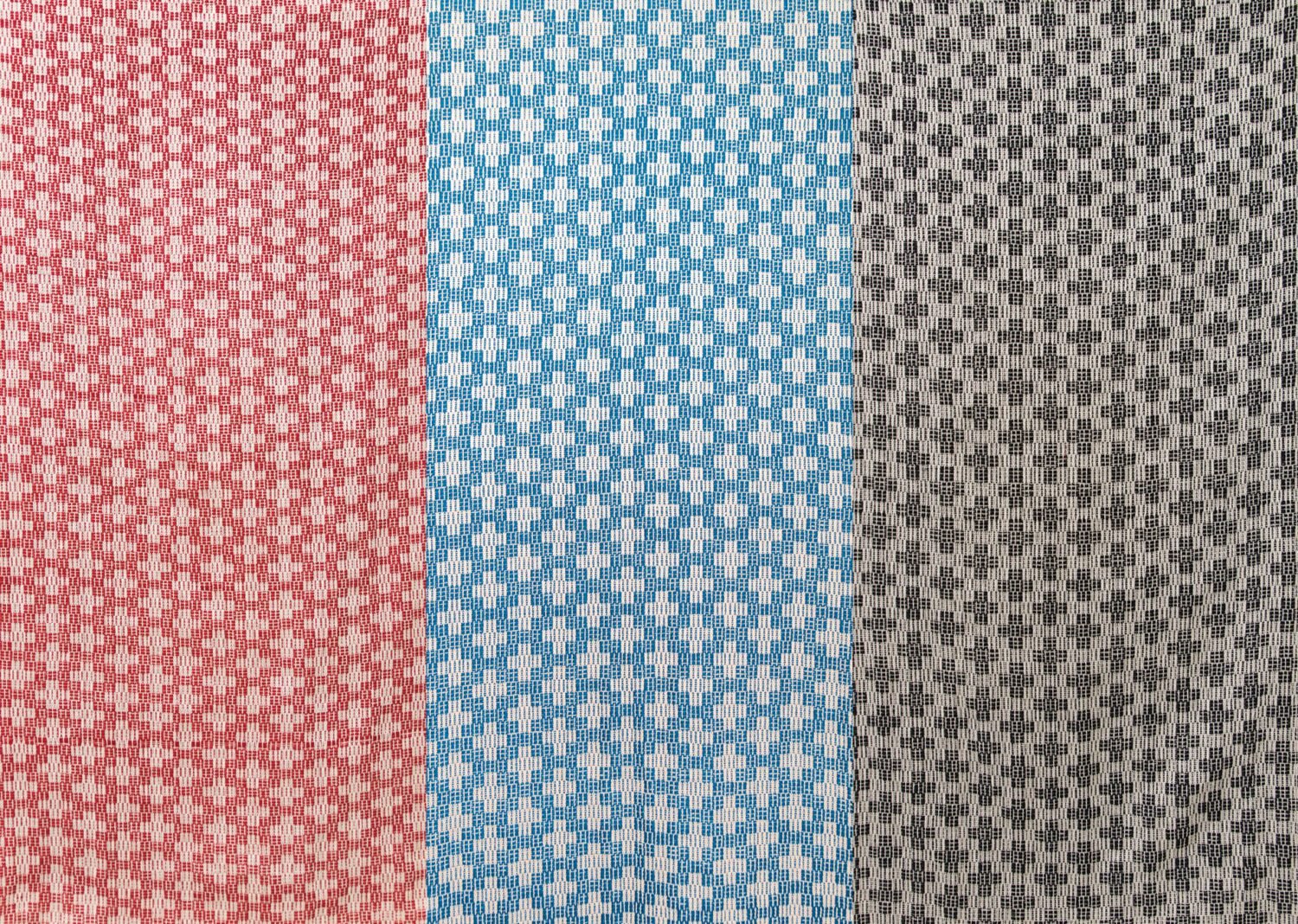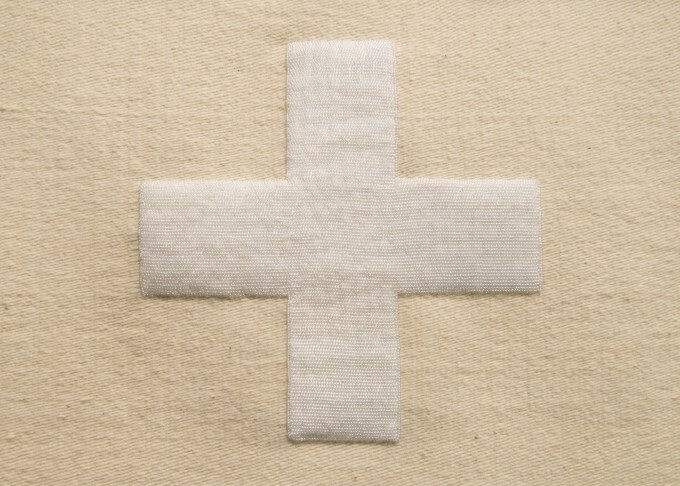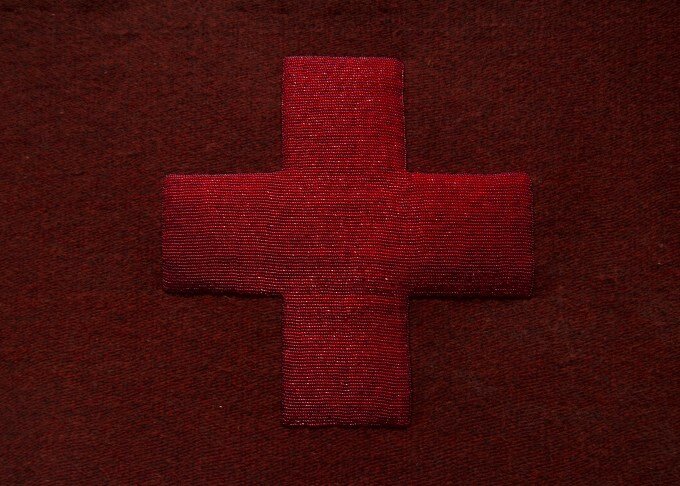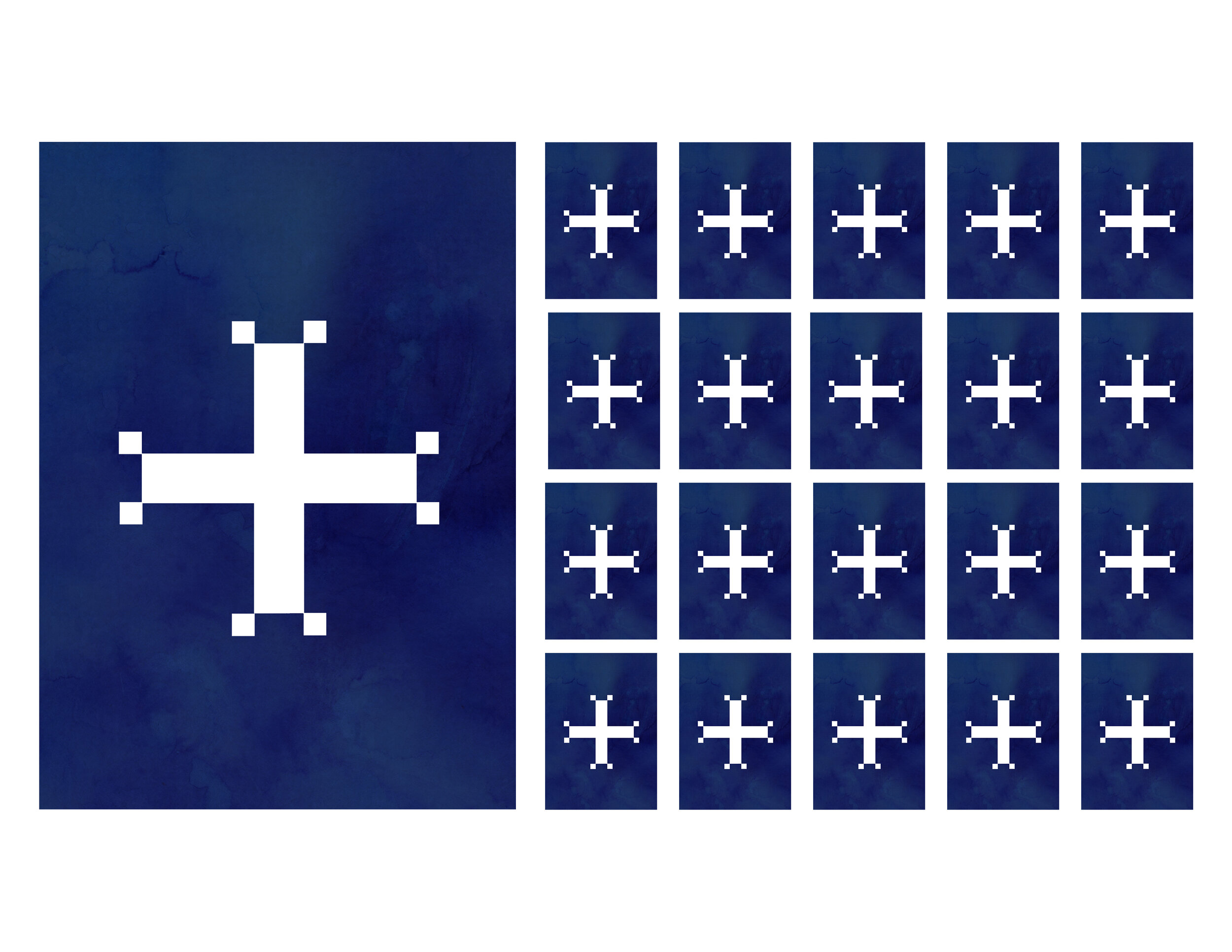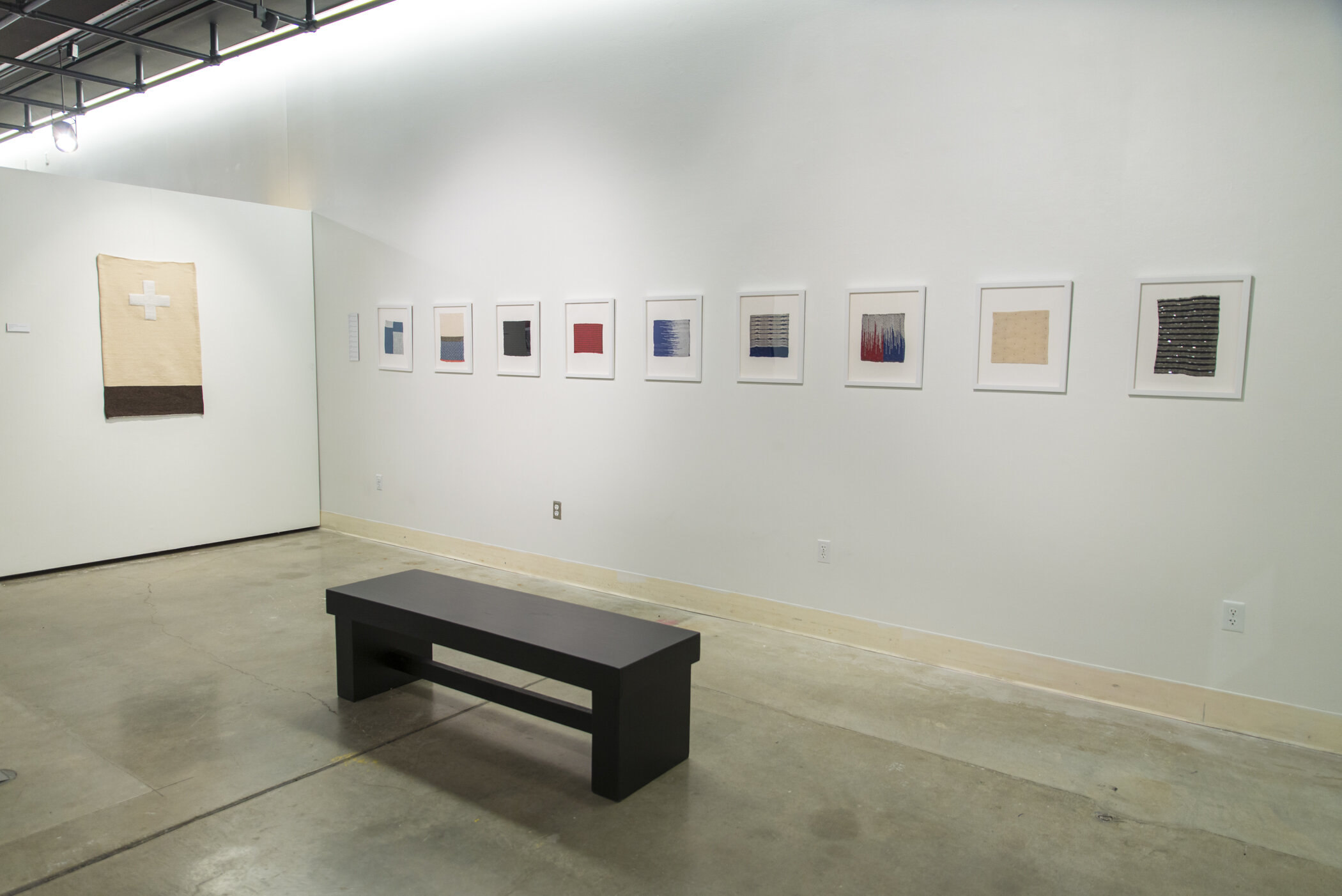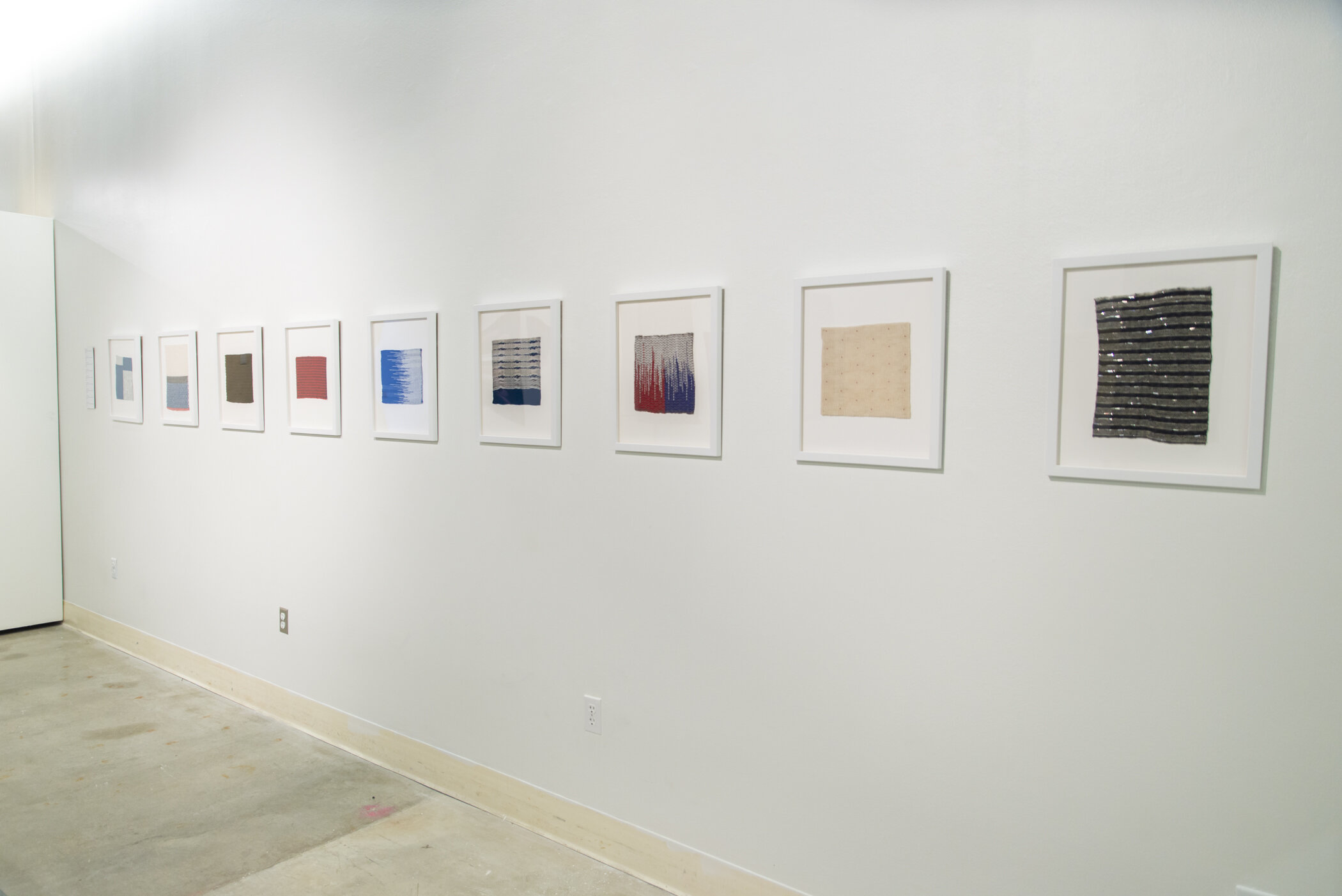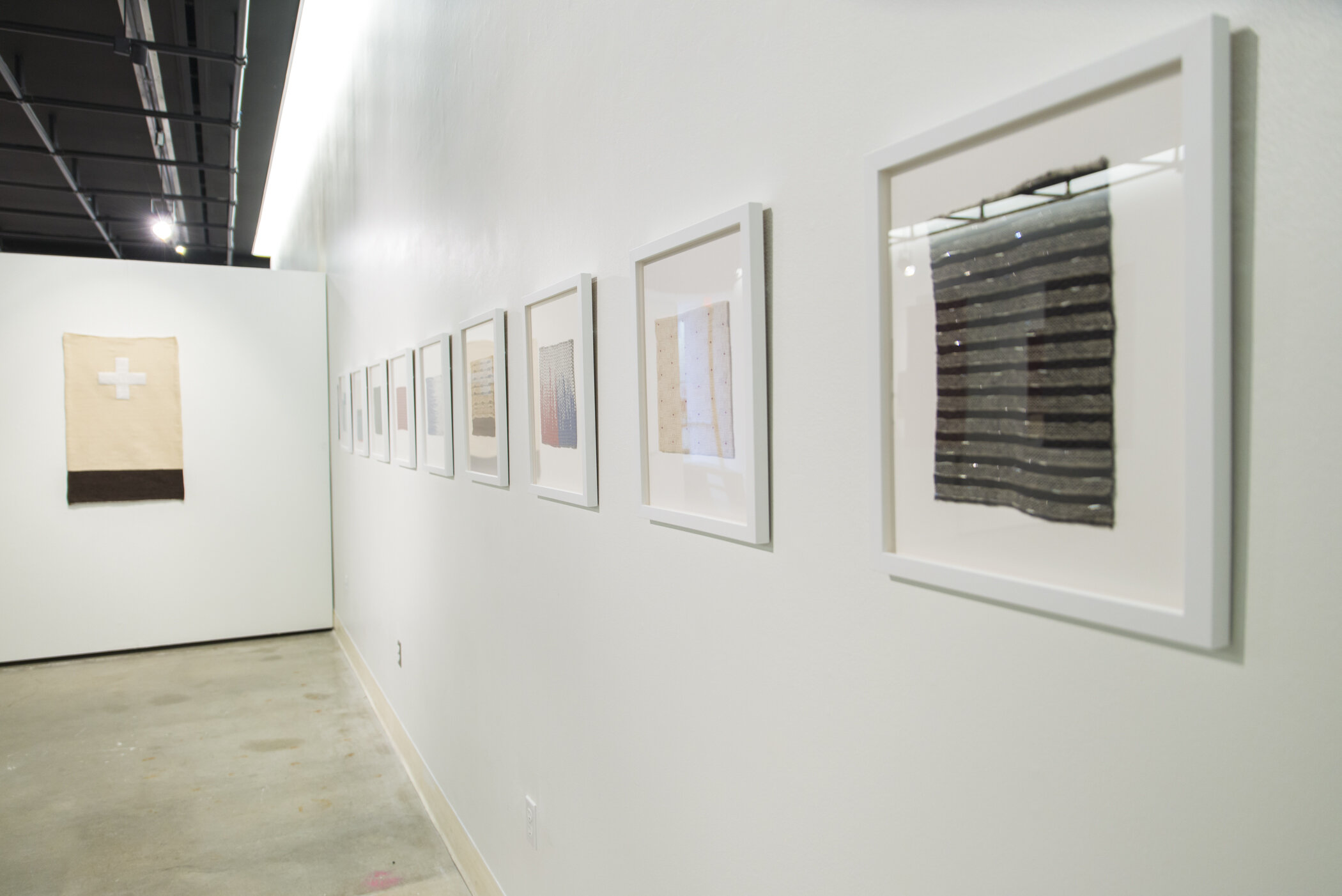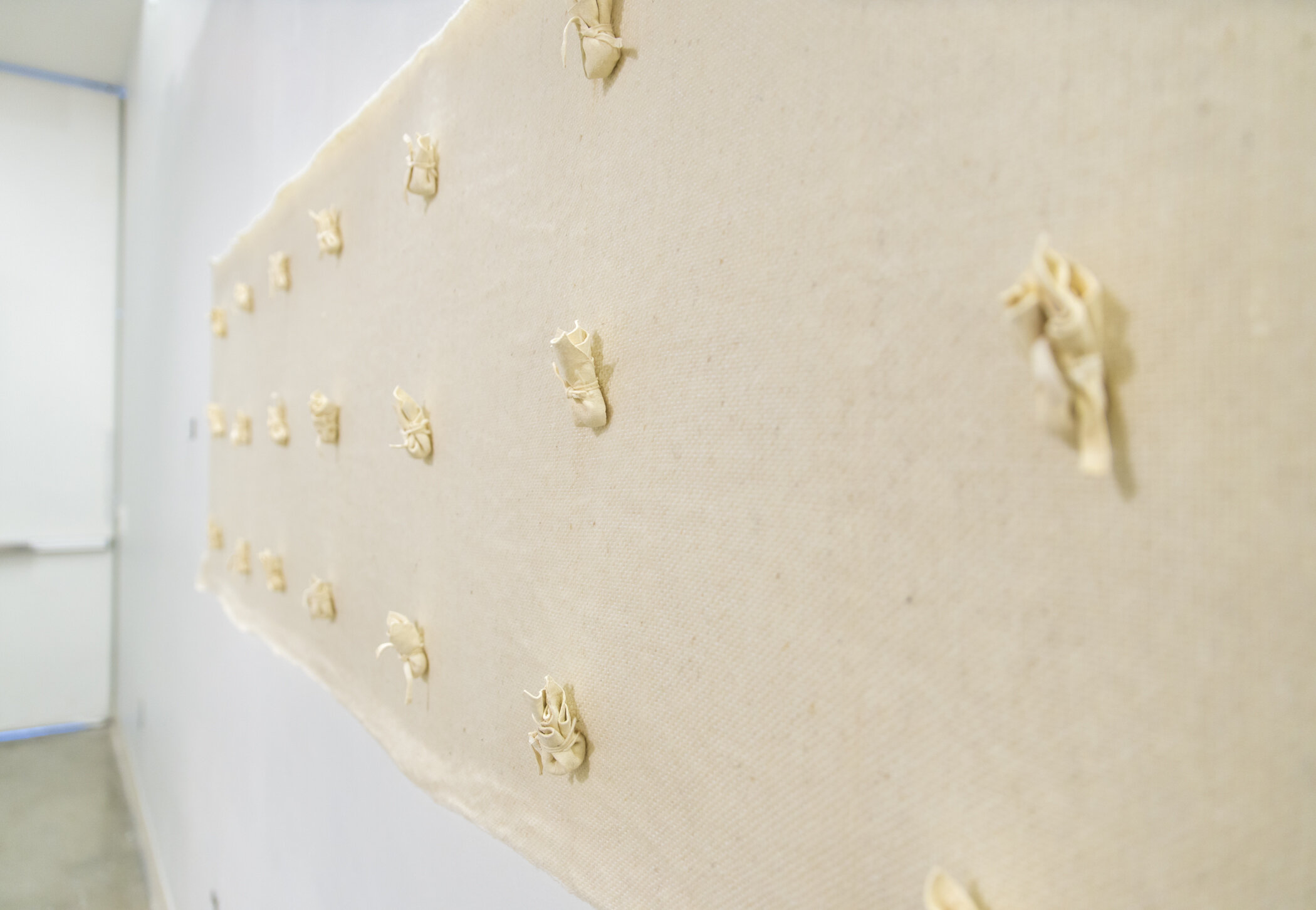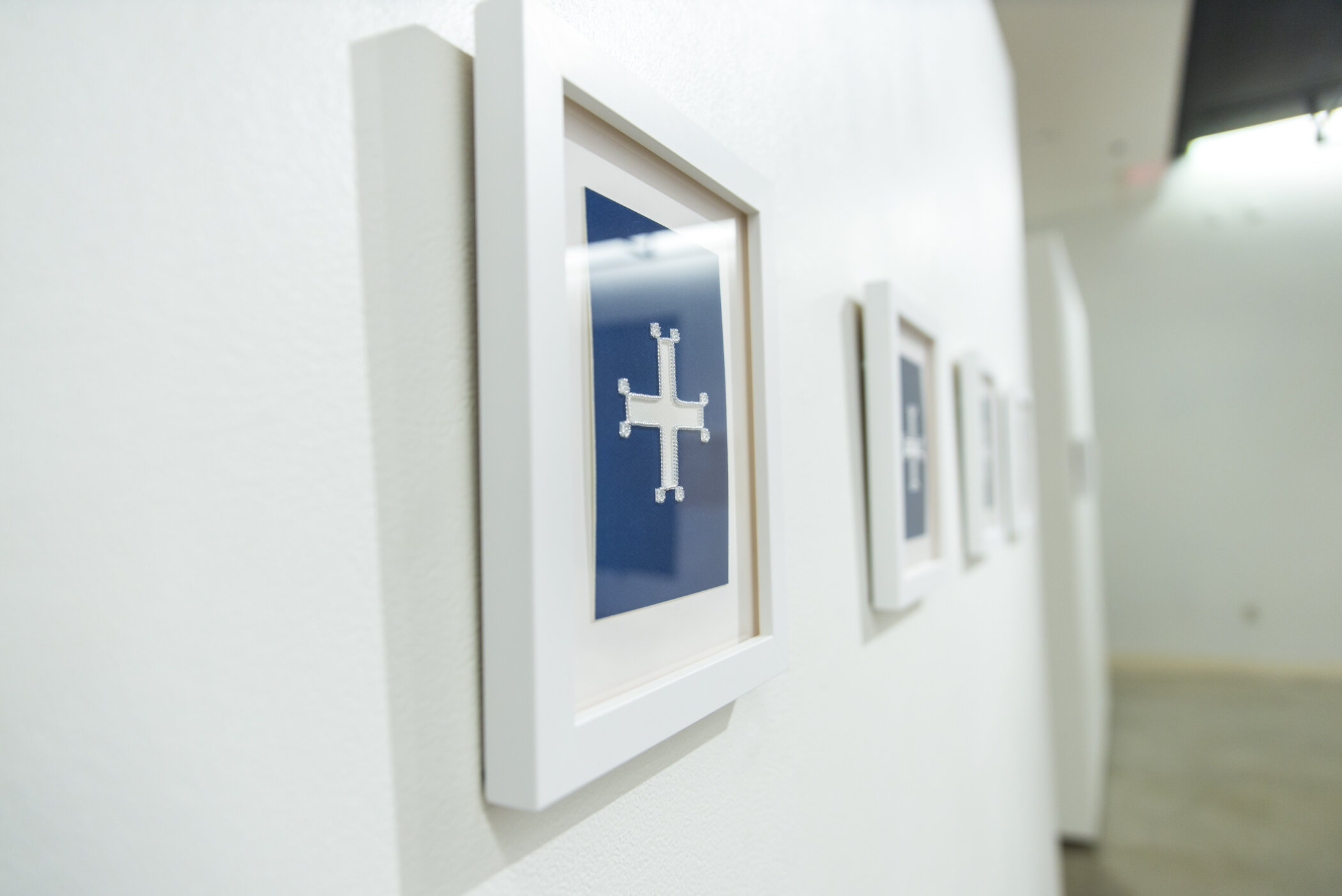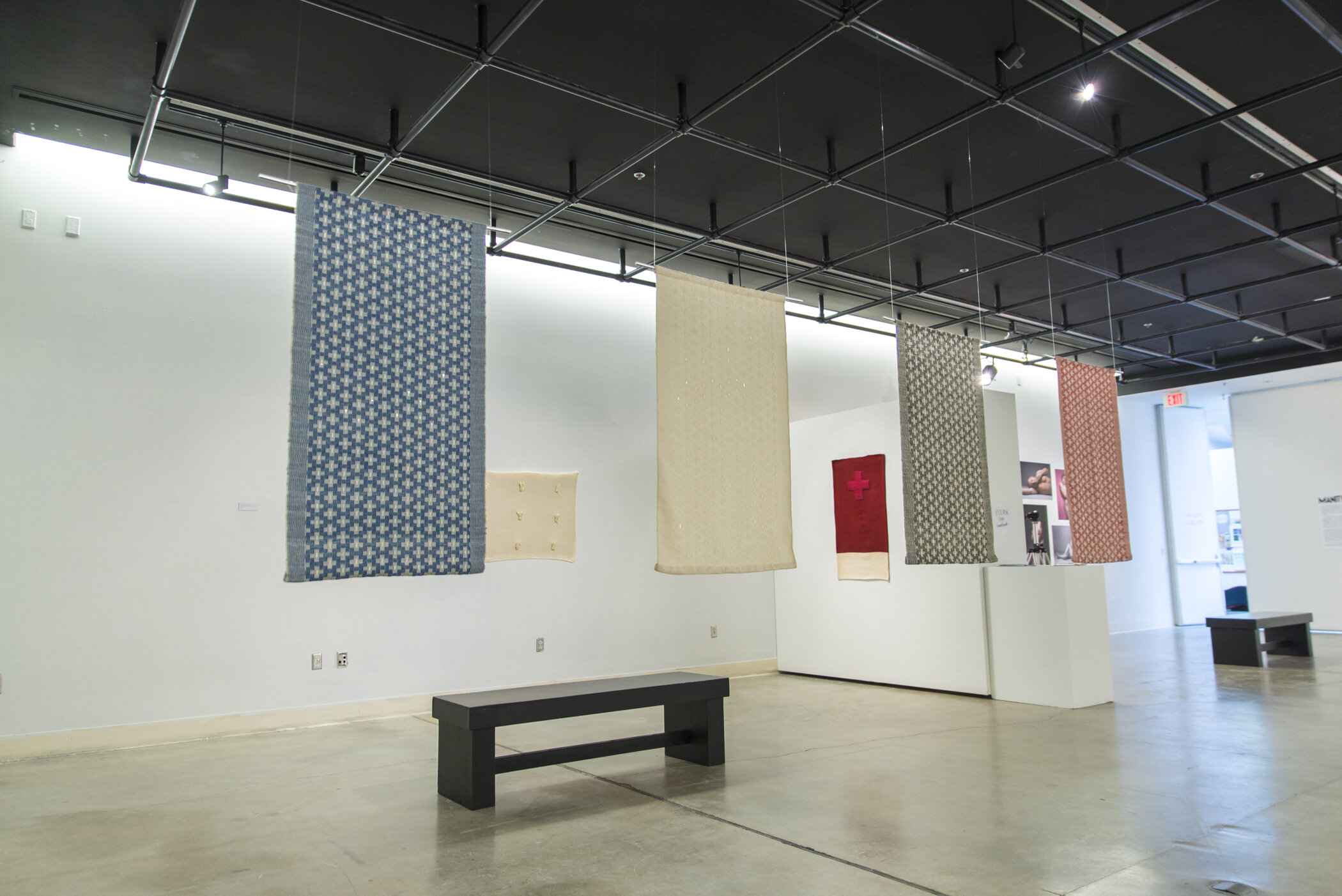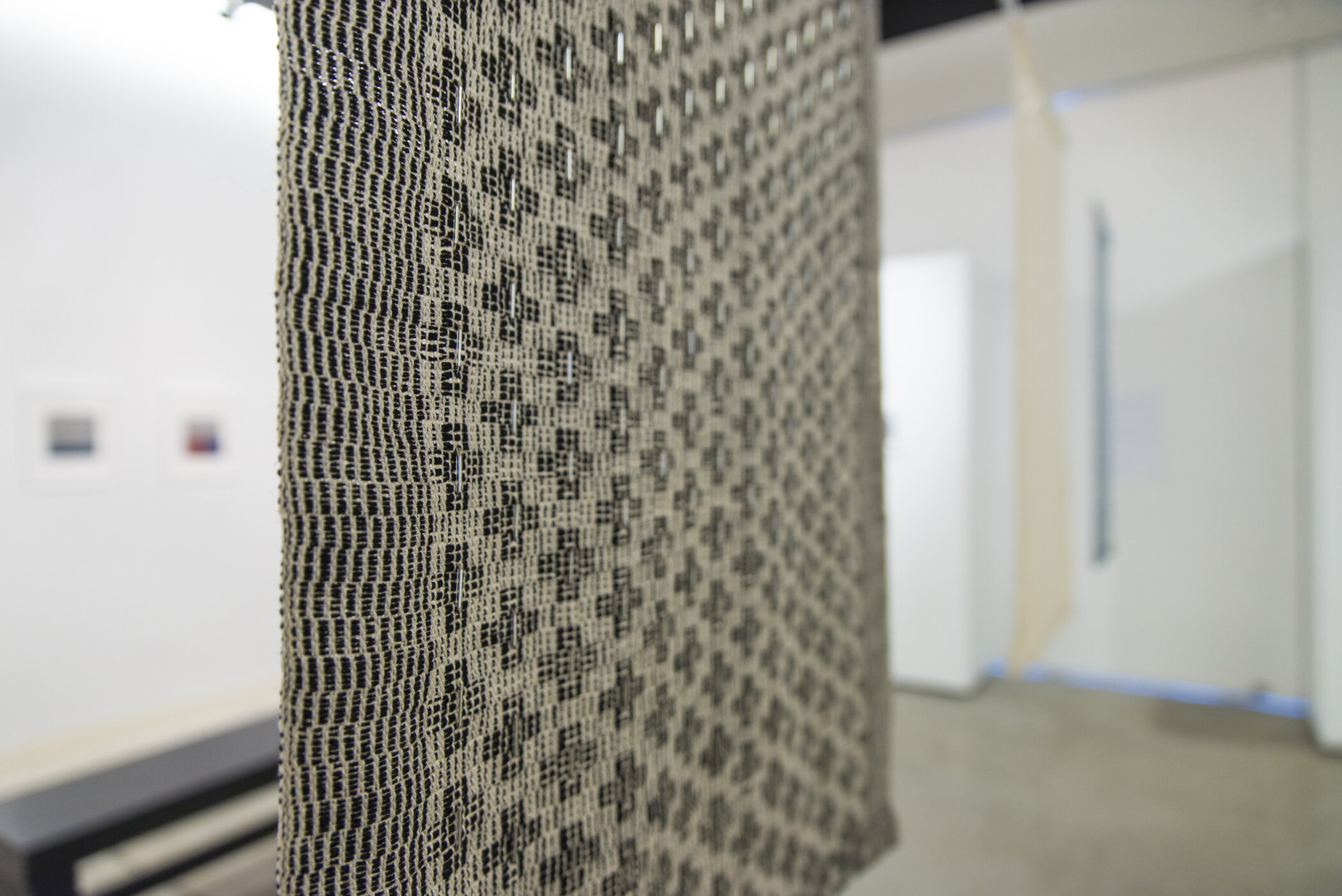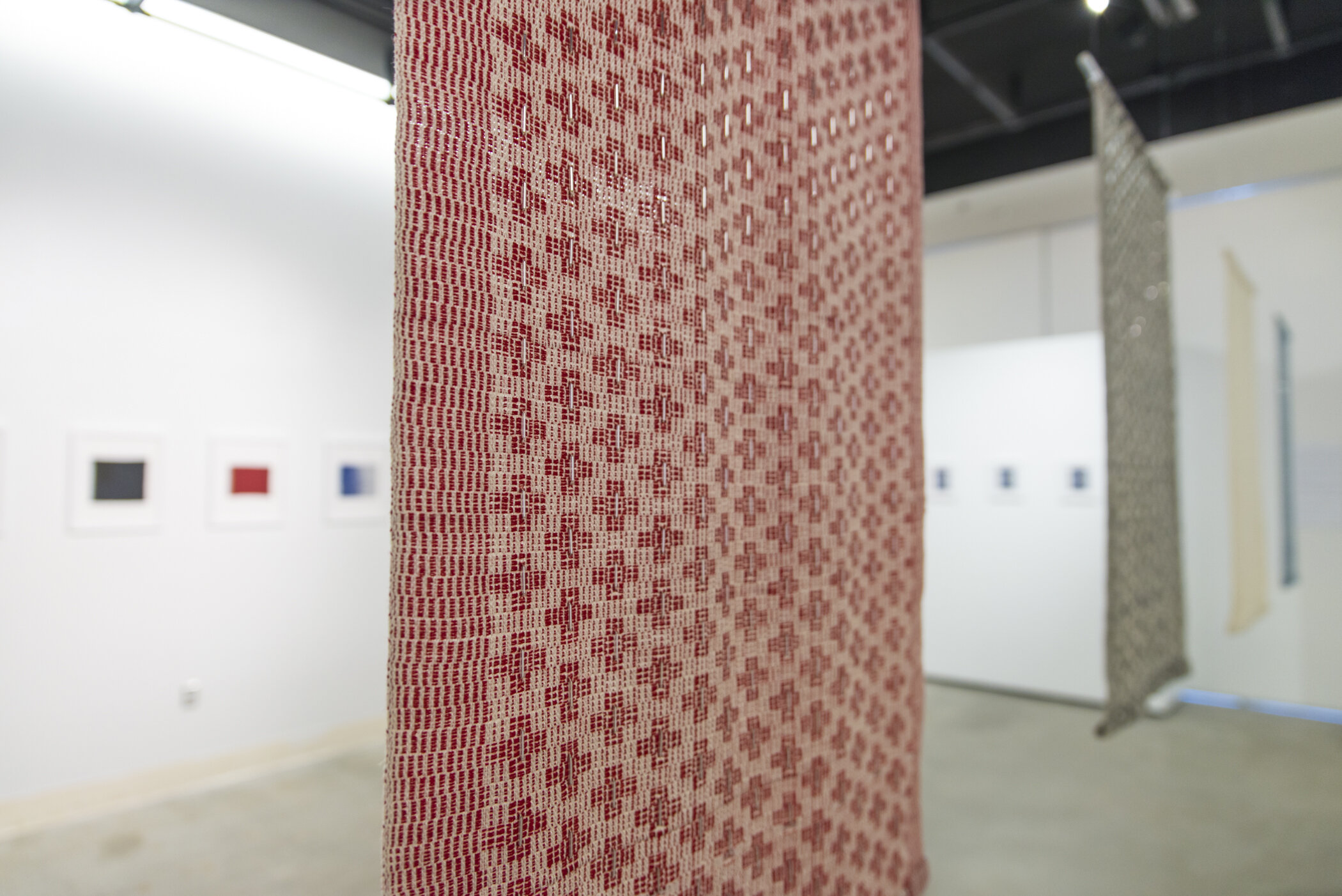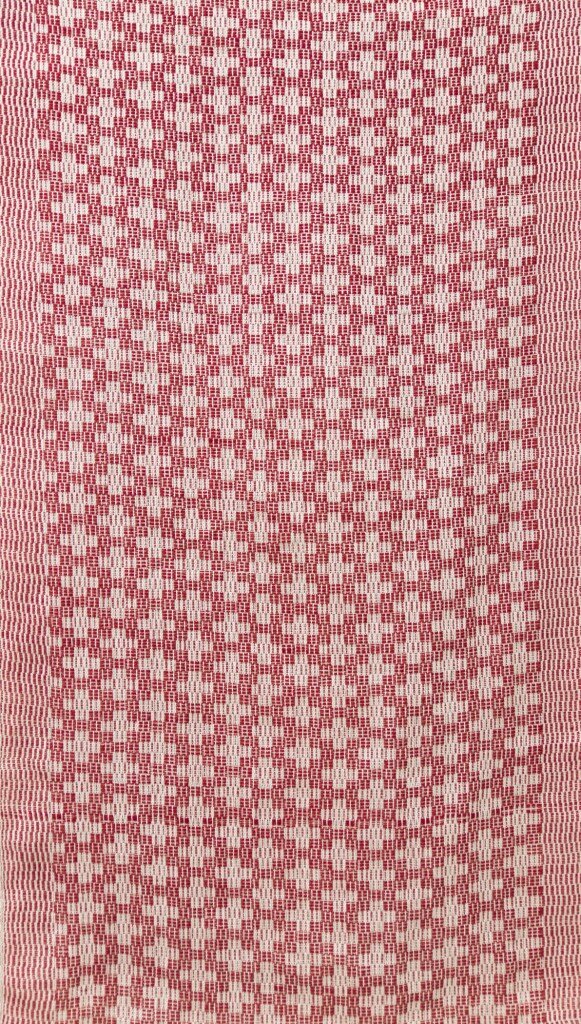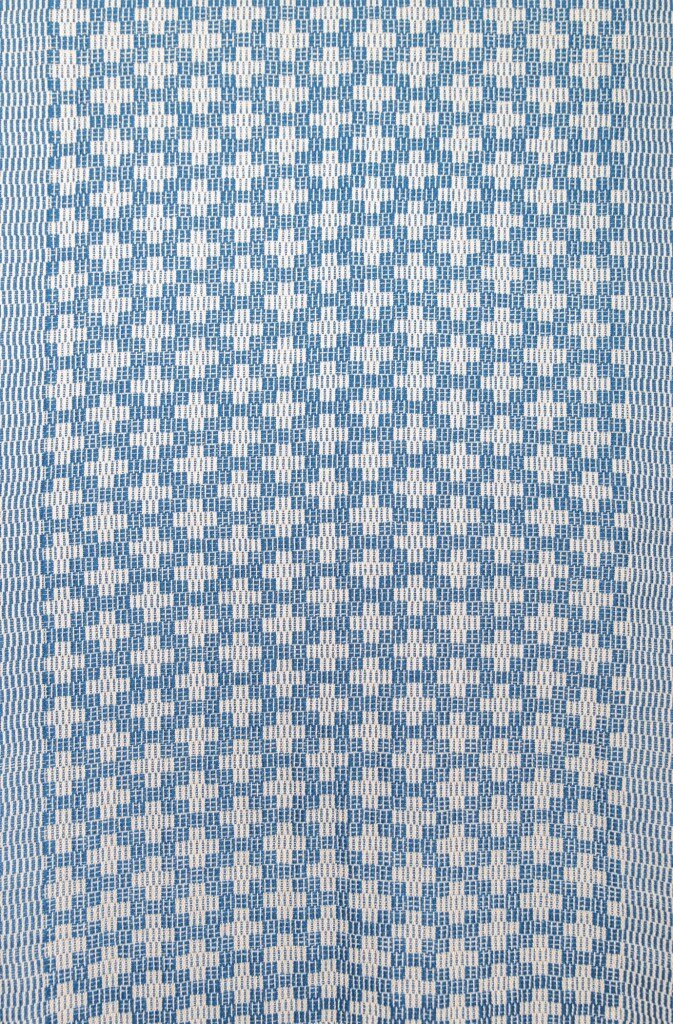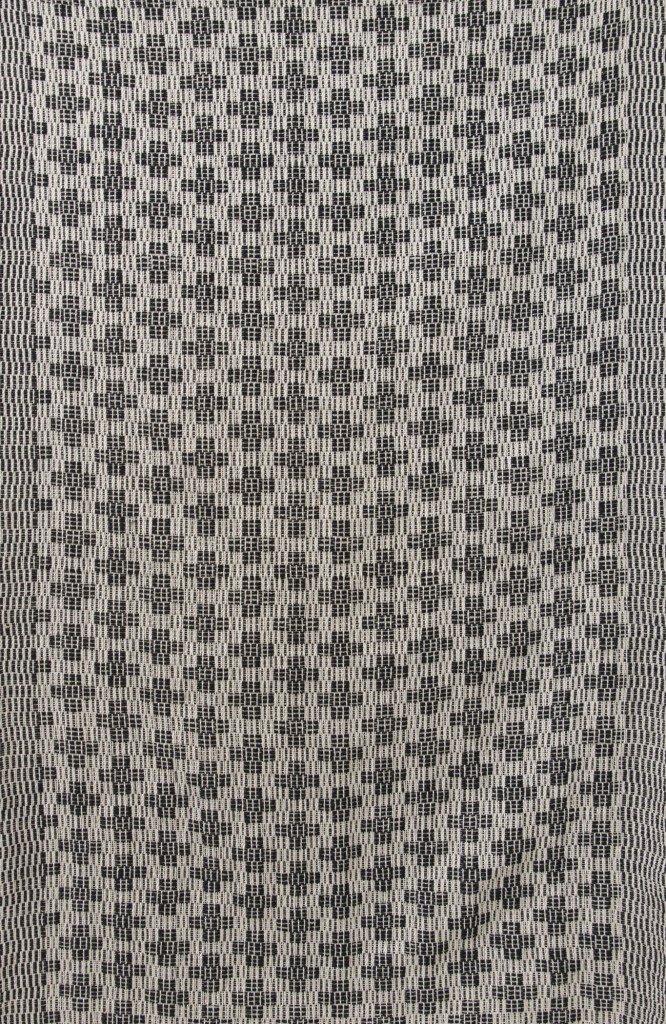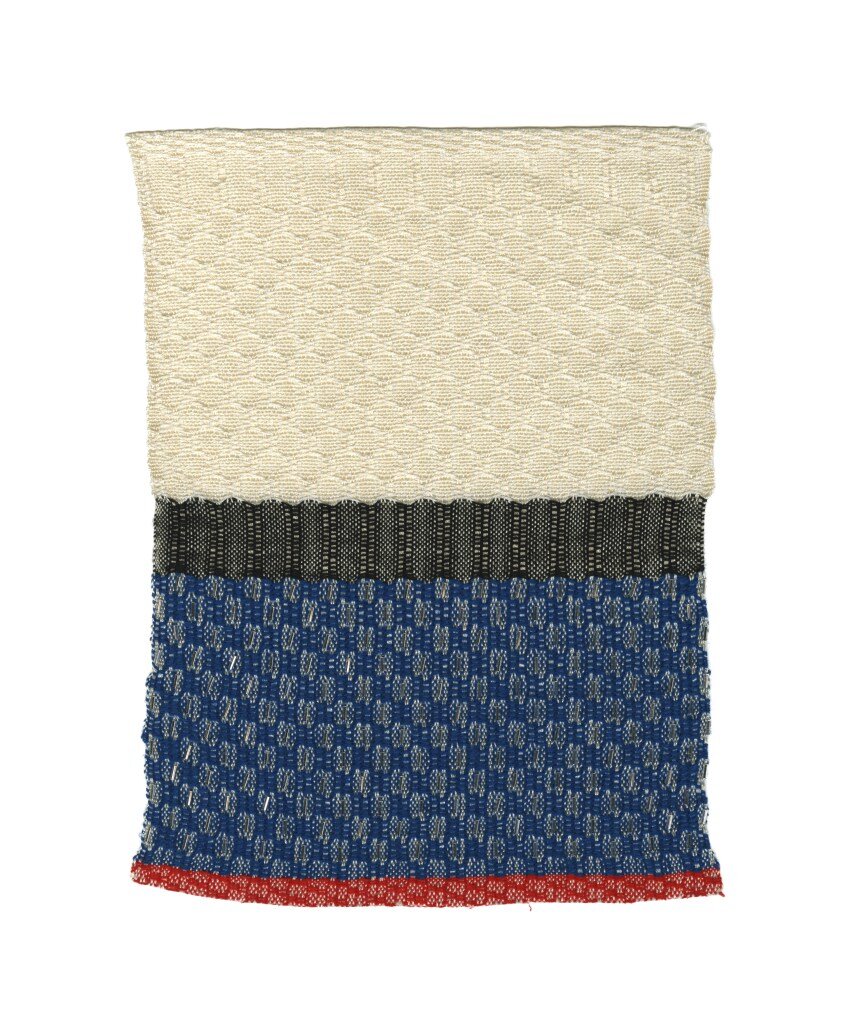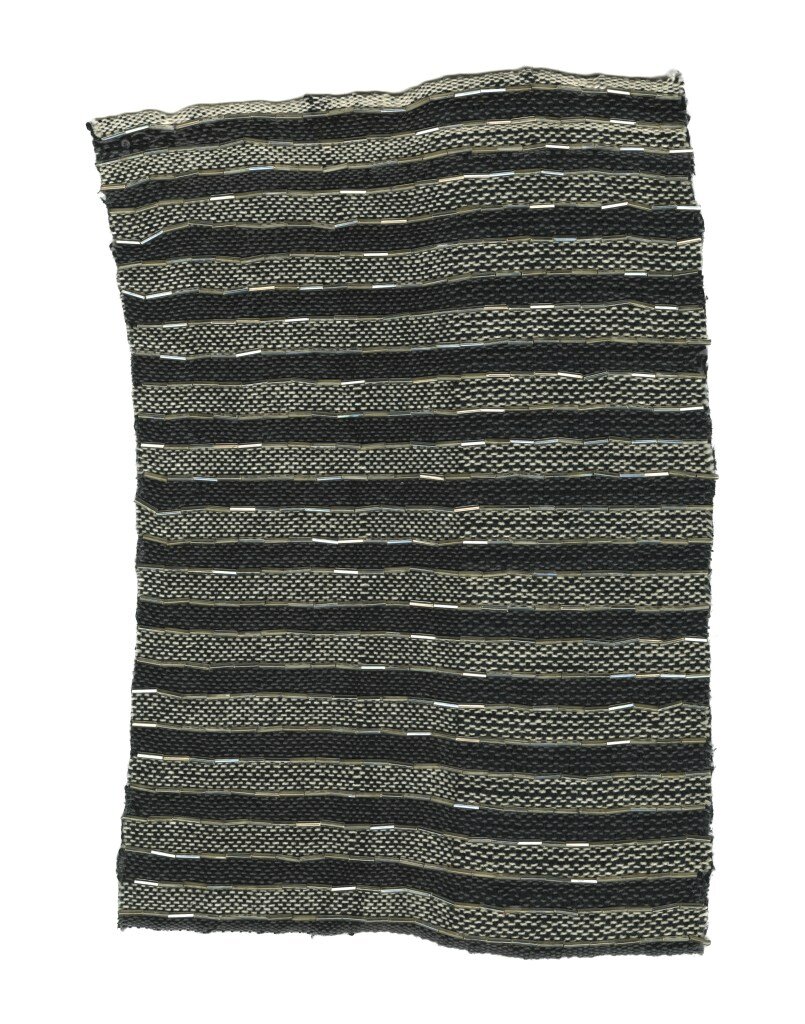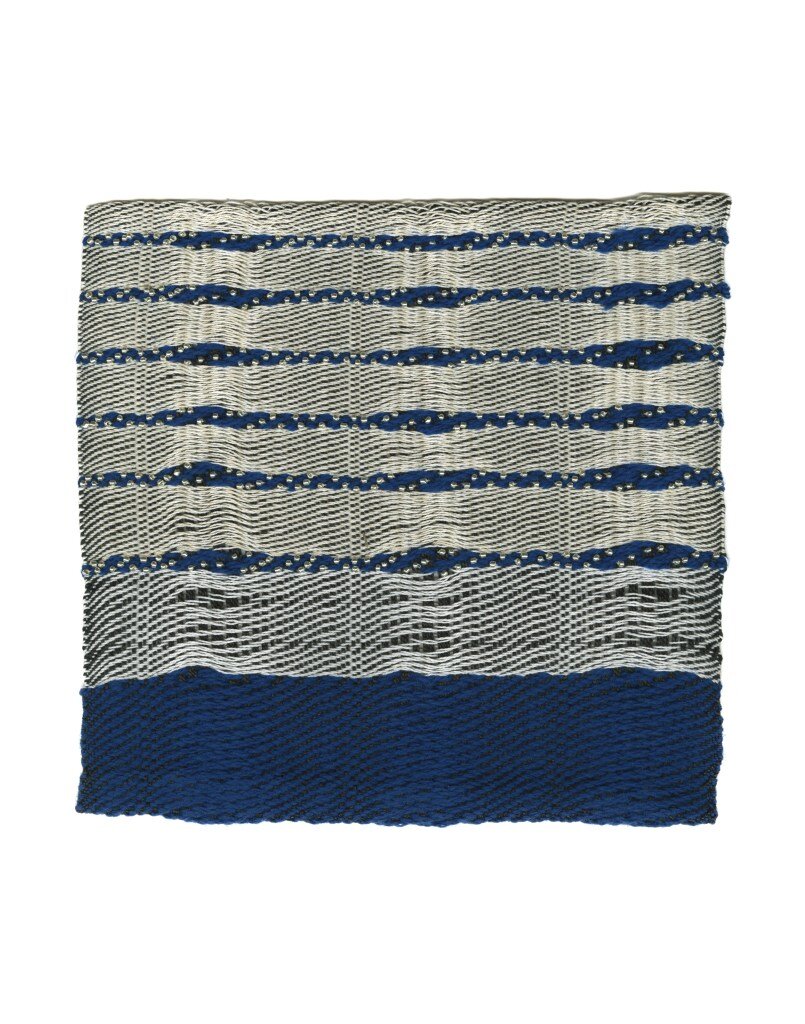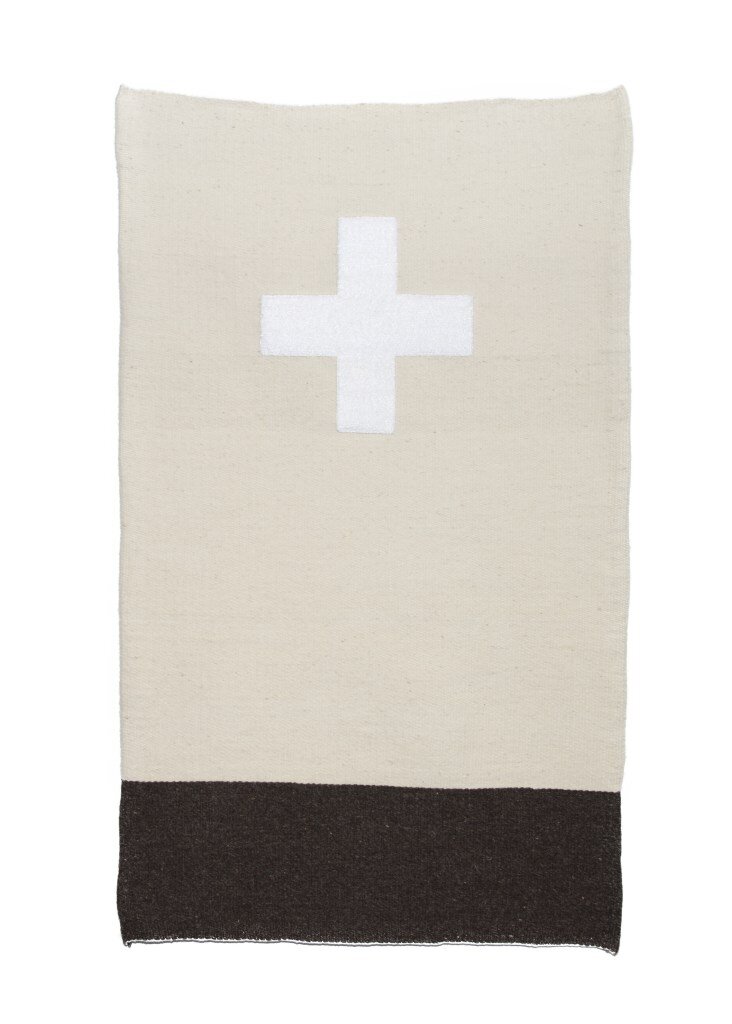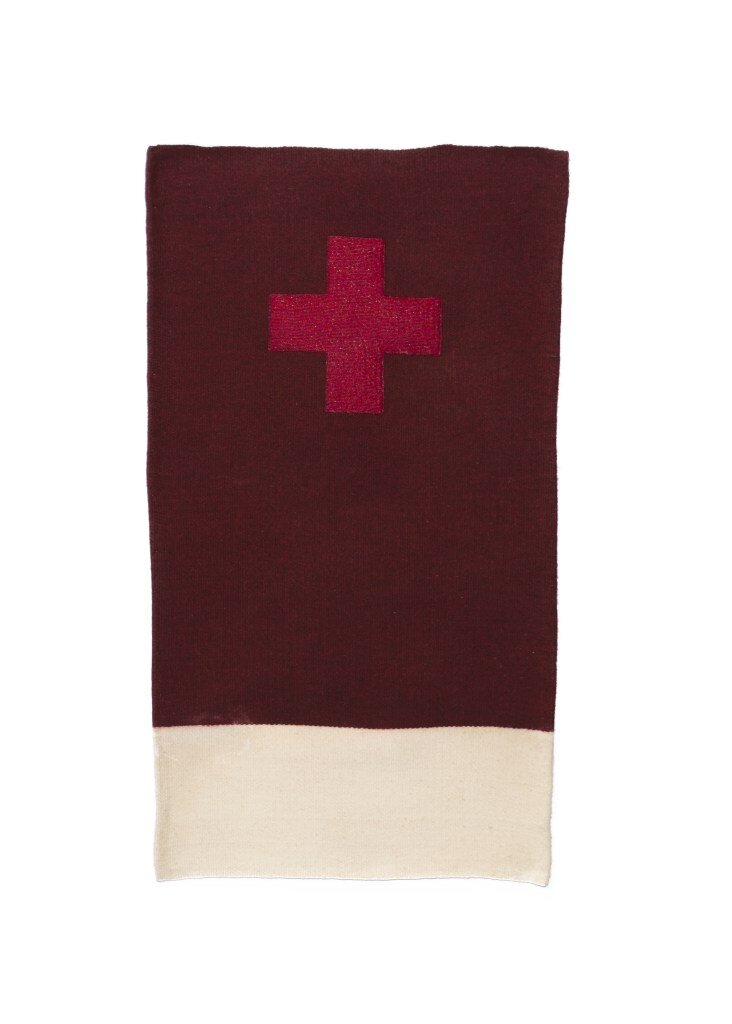Diné (Navajo) weaving is more than technique and craftsmanship; it is a connection to the Diné concept of Hozhó (balance) within nature. My weavings focus on re-interpreting the symbolic abstractions of our creation stories, cosmologies, and social structures, using a combination of traditional and nontraditional materials. Each hidden narrative is represented by every bead within each piece and speaks to the tradition of weaving in a contemporary sense. I have taken certain elements from my culture and have presented them in a way that translates to the deeper meaning behind Diné weavings. The abstract approach to my work gives my audience a window into the world of the Diné, while also introducing new techniques on design and color.
This starts a dialogue between traditional vs. fine art and the way that the western world continues to perceive Diné weavings as utilitarian objects and not works of art. I have approached this conversation by subtly introducing western forms of weaving in combination with Diné beliefs. By doing so, I am creating an entirely new concept that translates the language of Diné weavings through the understanding of the fine art world. This serves as a different approach to cultural reclamation and preservation and the importance of the meanings of the motifs used in my weavings.
Na'ashjéii Asdzáá (Spider Woman), who taught the ways of weaving, is one of the most important deities to the Diné and is the most prevalent motif used in my work. She was the first to weave her web of the universe while spreading Hózhó Náhásdlíí’ (Beauty Way) teachings of balance within the mind, body, & soul. This narrative formulates an understanding of certain aspects of Diné Bahané (creation story) as well as bringing Na'ashjéii Asdzáá into the fine art world.
The vastness of Dinébikéyah (the Diné homeland) is rich with the narratives that exist within the landscape. It is believed that to understand the Diné, you must place yourself into the world of Diné tradition. There is a poetic understanding of our weavings and the importance of the sacred ideologies woven into every piece, which has a quiet voice that resonates deep within the object. A weaving is more than a pattern between warp and weft; it serves as a reminder of the importance of tradition and the belief of hajisí dígíí dahiistłó biihji nilłx (we weave what we see.)
